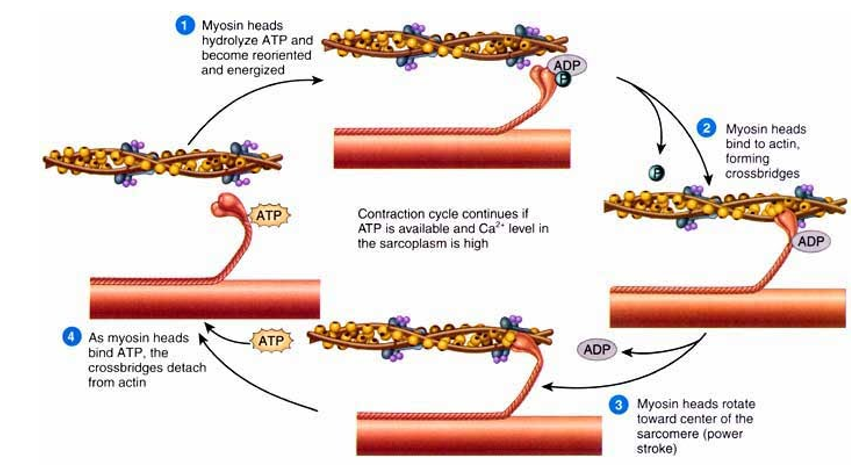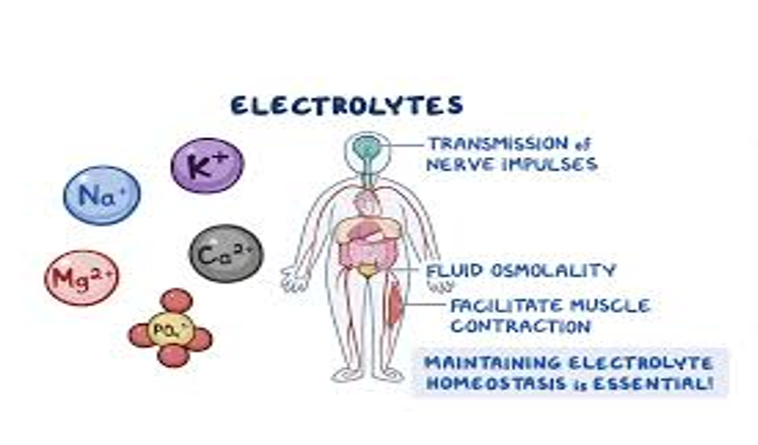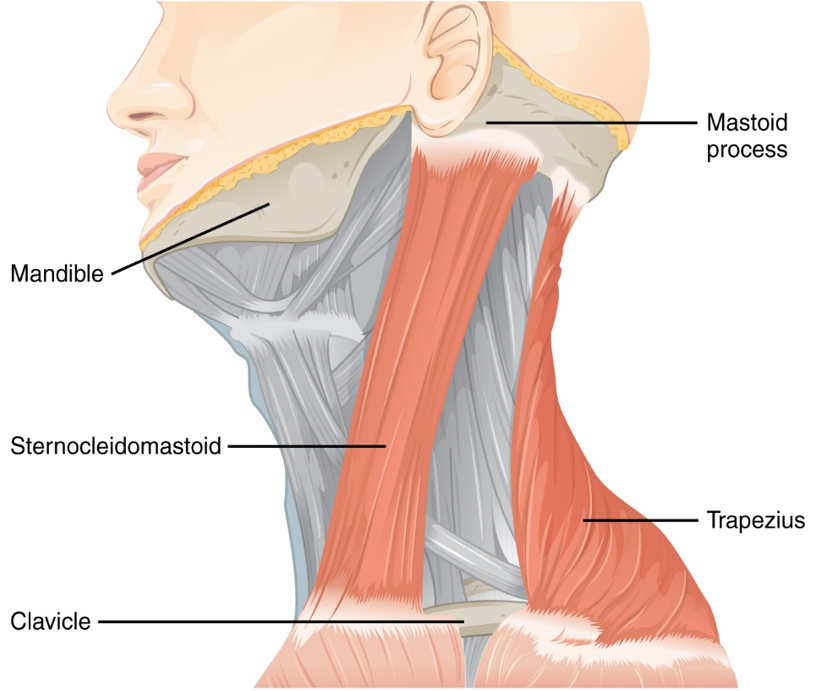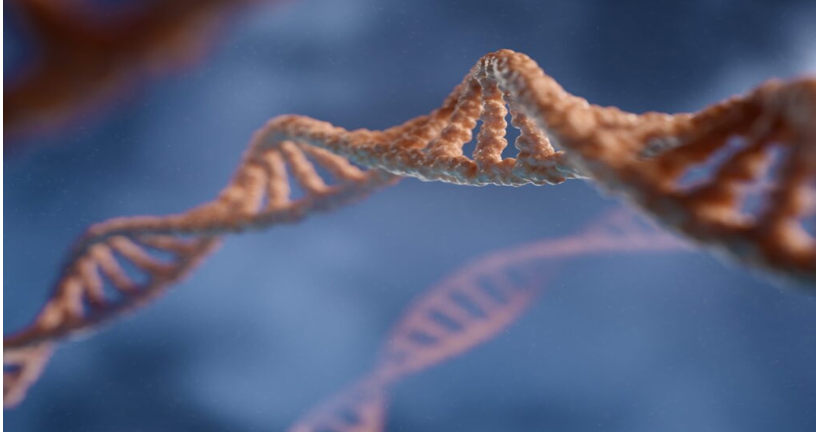Importance of Electrolytes and Fluids
Importance of Electrolytes and Fluids
Electrolytes and fluids play a vital role in maintaining the body’s internal balance and ensuring that all organs function smoothly. These essential minerals help the body’s systems work in rhythm and harmony, supporting everything from deep tissue health to overall organ performance.
What Are Electrolytes?
Electrolytes are minerals in the body that carry an electric charge. They are found in the blood, urine, tissues, and other body fluids. Despite being required only in small amounts, their presence is crucial for numerous physiological functions.
Some of the main electrolytes in the human body include:
- Sodium (Na⁺)
- Potassium (K⁺)
- Calcium (Ca²⁺)
- Magnesium (Mg²⁺)
- Phosphate (PO₄³⁻)
These minerals are not directly consumed in large quantities but are absorbed through various foods that naturally contain them. A well-balanced diet ensures an adequate supply of these electrolytes to maintain body equilibrium.
Electrolytes and Body Fluids
Around 70% of the human body is made up of fluids, primarily water. This fluid balance is maintained by electrolytes, which regulate how much water is retained or released by cells and tissues. The balance of electrolytes is what keeps our internal environment stable and supports critical bodily processes such as nerve transmission, muscle function, and hydration.
Functions of Electrolytes
- Regulation of Water Distribution and Osmolality:
Electrolytes control the movement and distribution of water within the body through a process known as osmosis. Osmotic pressure ensures that fluids move appropriately between cells and tissues depending on the concentration of electrolytes.
When electrolytes are balanced, the body maintains proper hydration levels. However, an imbalance can lead to dehydration or fluid overload. This is why maintaining electrolyte balance is essential, especially in hot weather or during physical activity.

Dehydration and Heat-Related Problems
During summer or high-temperature conditions, the body loses a significant amount of water and electrolytes through sweat. If not replenished, this imbalance can lead to dehydration.
Common symptoms include dizziness, fainting, fatigue, and temporary blackouts. These occur because the body’s internal water and electrolyte balance is disrupted. In severe cases, this can become a serious health issue, affecting heart and brain function.
Hence, staying hydrated and maintaining electrolyte balance is not just important—it is vital for survival.
- Regulation of Acid-Base Balance
Electrolytes also play a key role in maintaining the body’s acid-base balance (pH). The body’s cells and enzymes function best within a narrow pH range. Electrolytes such as bicarbonate, phosphate, and potassium help buffer acids and bases, ensuring that blood pH remains stable. Any disturbance in this balance can lead to conditions like acidosis or alkalosis, both of which can disrupt normal metabolic processes.
- Regulation of Acid–Base Balance (pH Level)
Maintaining the body’s acid–base balance is one of the most crucial roles of electrolytes. The blood pH level must remain within a narrow range (around 7.35–7.45) for the body to function properly. Even a slight variation can affect enzyme activity, hormone secretion, and cellular metabolism.
When the body is slightly alkaline, the secretion of hormones and enzymes remains balanced. This ensures that all physiological processes—such as digestion, metabolism, and detoxification—work smoothly. Electrolytes such as bicarbonate, phosphate, potassium, and sodium help neutralize excess acids and maintain this balance.
If the body becomes too acidic, symptoms such as acid reflux, heartburn, and acidity may occur. This can result from an imbalance of electrolytes, poor diet, or dehydration. Therefore, maintaining an optimal electrolyte level supports not only hydration but also the body’s natural acid–alkaline harmony.
- Transmission of Nerve Impulses and Neuromuscular Activity
Electrolytes are also essential for the transmission of nerve impulses and neuromuscular coordination. The human nervous system works like a complex communication network that sends signals from the brain to different parts of the body. These signals, or impulses, travel through neurons—tiny nerve cells that are much thinner than a strand of hair.
This entire process of neurotransmission depends on the proper concentration of electrolytes, especially sodium (Na⁺), potassium (K⁺), calcium (Ca²⁺), and magnesium (Mg²⁺). These minerals create the electrical gradient required for nerve cells to send and receive messages efficiently.
When electrolytes are balanced:
- The nervous system works smoothly.
- Communication between the brain and body is clear and precise.
- Muscle movements are well-coordinated and controlled.
However, an imbalance of electrolytes—either too low or too high—can disturb this communication system. This may cause muscle cramps, twitching, weakness, or delayed reflexes. In severe cases, it may even lead to confusion or irregular heartbeat.
- Muscle Contraction and Relaxation
Another key function of electrolytes is to support muscle contraction and relaxation. Muscles rely on the movement of electrolytes like calcium, sodium, and potassium across cell membranes to generate electrical impulses.
- Calcium triggers the actual contraction of muscle fibers.
- Sodium and potassium help reset the muscle after contraction, enabling it to relax and prepare for the next movement.
Any disruption in electrolyte balance can cause muscles to become stiff, weak, or prone to spasms. This is why athletes, people working in hot climates, and those engaging in physical labor must pay special attention to fluid and electrolyte intake.

- Muscle Contraction and Relaxation
Muscles in the body—including the heart, skeletal muscles, and smooth muscles—require electrolytes to contract and relax efficiently. The sodium (Na⁺), potassium (K⁺), calcium (Ca²⁺), and magnesium (Mg²⁺) ions work together to transmit electrical signals that control these movements.
For example:
- Calcium triggers the contraction of muscle fibers.
- Sodium and potassium help muscles relax and prepare for the next contraction.
- Magnesium acts as a natural relaxant, preventing cramps and stiffness.
If this balance is disturbed, muscles cannot contract or relax properly.
A practical example is the heart muscle. If the heart contracts but does not relax efficiently, it can lead to symptoms such as angina (chest pain), heaviness, or discomfort. Hence, balanced electrolytes are essential for maintaining healthy muscle rhythm and strength throughout the body.
- Blood Clotting (Coagulation)
Blood clotting is another vital process influenced by electrolytes. When an injury or wound occurs, the body must quickly stop bleeding to prevent excessive blood loss.
The primary nutrient responsible for blood clotting is Vitamin K, often called the clotting vitamin. However, this vitamin alone cannot function effectively without the help of certain electrolytes.
Electrolytes such as calcium, sodium, and potassium assist Vitamin K and clotting enzymes by:
- Activating the proteins involved in forming clots,
- Supporting enzyme reactions that convert liquid blood into a semi-solid form, and
- Helping maintain the right balance between clot formation and fluid circulation.
In simple terms, without adequate electrolytes, the blood’s ability to clot properly is reduced, increasing the risk of continuous bleeding after injury.
- Regulation of Enzyme Reactions
Enzymes are biological catalysts that speed up chemical reactions in the body. They are responsible for almost every metabolic process — from digestion to hormone regulation and tissue repair.
Electrolytes play a supportive role by helping enzymes activate and perform these reactions efficiently.
For instance:
- The liver, the body’s largest chemical factory, depends on electrolytes to regulate enzyme production and secretion.
- During hormonal imbalance, specific electrolytes like calcium and magnesium support enzyme activity to restore balance.
- In conditions like osteoporosis, adequate calcium and magnesium ensure proper enzymatic reactions for bone metabolism.
Thus, without electrolytes, enzymes cannot perform their tasks efficiently, leading to sluggish body functions and metabolic disturbances.
- Interrelationship Between Different Electrolytes
The body maintains a delicate balance among all electrolytes. When one increases, another often decreases — this interconnected system ensures that all internal functions remain stable.
For example:
- When sodium levels increase, potassium levels tend to drop.
- When calcium levels rise, phosphorus levels decrease.
- When phosphorus increases, magnesium levels may fall — and vice versa.
This interdependence explains why during vomiting, diarrhea, or dehydration, doctors often administer saline (sodium-rich fluid) to restore electrolyte levels quickly.
By correcting sodium deficiency, other minerals such as potassium automatically adjust, helping the body regain its natural equilibrium.
Interconnection of Electrolytes and Their Role in Body Functions
Electrolytes do not work in isolation; they are mutually connected and interdependent. A change in the level of one electrolyte directly influences the balance of others. This delicate equilibrium ensures that all bodily systems—muscular, neural, and circulatory—function harmoniously.
- Interrelationship Between Electrolytes
Each electrolyte in the human body has a specific function, yet all are interlinked.
For instance:
- When magnesium levels decrease, it directly affects the calcium balance.
- If calcium levels increase, the body simultaneously regulates Vitamin D levels, since Vitamin D (especially Vitamin D₃) works closely with calcium to promote its absorption.
- Similarly, when magnesium decreases, potassium levels are also disturbed.
Because of these close connections, electrolyte management is crucial in both natural healing and modern medicine. In hospitals, doctors monitor these levels carefully. During treatments or when intravenous fluids (saline) are given, they ensure that no single electrolyte rises or falls drastically. An imbalance can affect vital organs such as the heart and kidneys, leading to serious health risks.
- Effects of Electrolyte Imbalance
When the body’s electrolyte levels become too high or too low, several symptoms and complications can occur.
Common signs of electrolyte imbalance include:
- Arrhythmia (irregular heartbeat)
- Fatigue and dizziness
- Dehydration
- Increased pulse rate
- Weakness or muscle twitching
- Spasms or cramps
- Constipation
- Headache
- Brain swelling or confusion
- Nausea and vomiting
These symptoms indicate that the body’s “electric charge” system is disturbed.
Just as a mobile phone needs regular charging to function, our body also needs these electrical minerals (electrolytes) to stay “charged.” They carry tiny electric impulses that power nerve transmission, muscle function, and cell activity down to the deepest tissues.
If this balance is lost, the body begins to experience fatigue and dysfunction at the cellular level.

- Importance of Maintaining Electrolyte Balance
To maintain healthy electrolyte levels:
- Eat a balanced diet rich in fruits, vegetables, seeds, and nuts.
- Stay hydrated with sufficient water and natural fluids like coconut water or herbal drinks.
- Practice deep breathing and relaxation to maintain oxygen flow and reduce stress-related electrolyte loss.
These practices help the body regulate its electrical balance naturally.
Major Electrolytes and Their Functions
Now, let’s understand the main electrolytes individually, beginning with Sodium (Na⁺)—the primary mineral responsible for fluid balance and nerve function.
- Sodium (Na⁺)
a) Fluid Balance
Sodium plays a critical role in maintaining fluid balance inside and outside the body’s cells.
Each cell is surrounded by a cell membrane that requires proper water distribution to stay alive and functional.
Sodium helps regulate the movement of water through these membranes, ensuring that cells neither shrink (due to dehydration) nor swell (due to excess water).
This balance keeps tissues healthy and supports the smooth functioning of all organs.
b) Nerve Function
Sodium is vital for nerve impulse transmission. It allows neurons to send and receive signals effectively, supporting every reaction, movement, and thought process.
All our daily activities—whether moving our limbs, responding to stimuli, or even thinking—depend on these sodium-driven electrical impulses.
If sodium levels become too high or low, it can lead to anxiety, hyperactivity, or nervous fatigue, as the neurons may become overactive or sluggish. Maintaining proper sodium levels keeps the communication between the brain and body stable.
c) Muscle Contraction
Sodium also supports muscle contraction and relaxation. It works along with potassium and calcium to ensure that muscles perform rhythmic movements.
When sodium levels are disturbed, muscles may fail to contract properly, leading to tiredness, weakness, or cramps.
Thus, sodium acts as a key regulator of physical energy, movement, and coordination.
Understanding the Role of Electrolytes: Sodium and Potassium
Electrolytes are vital minerals that carry an electric charge and play an essential role in maintaining various physiological functions of the body. Among these, sodium and potassium are two of the most important electrolytes responsible for muscle contraction, nerve function, fluid balance, and blood pressure regulation.
Let’s understand how these two minerals work and why maintaining their balance is crucial for overall health.
1. Sodium: The Key to Muscle Contraction and Blood Pressure Regulation
Sodium is one of the major electrolytes that supports several vital processes in the body.
When the sodium level in the body is balanced, it helps in the proper contraction and relaxation of muscles, smooth nerve transmission, and the maintenance of blood pressure and fluid balance.
a. Role in Muscle Function
If the body lacks adequate sodium, muscle contraction does not occur rhythmically. As a result, you may experience stiffness, cramps, or even difficulty holding objects properly.
This happens because sodium plays a key role in the transmission of electrical impulses required for muscle movement. When sodium is deficient, both contraction and relaxation of muscles are affected, leading to muscle fatigue or cramps.
b. Role in Blood Pressure Regulation
Sodium helps control blood volume, which directly influences blood pressure.
That’s why patients with hypertension (high blood pressure) are often advised to maintain moderate salt intake.
If the sodium level increases beyond normal, the body retains more fluid, increasing blood pressure. Conversely, low sodium levels may cause dizziness, weakness, or low blood pressure.
c. Nutrient Transport
Sodium also assists in transporting nutrients and other essential substances across cell membranes. It ensures that vital nutrients reach the cells efficiently for energy production and proper functioning.
d. Sodium Imbalance
An imbalance of sodium levels can lead to two conditions:
- Hyponatremia – when sodium levels are too low.
- Hypernatremia – when sodium levels are too high.
Both conditions can disrupt normal body functions and need to be managed under medical supervision.
- Potassium: The Partner Mineral of Sodium
Potassium works closely with sodium to maintain the electrolyte balance in the body.
It is an electrically charged mineral that regulates the movement of fluids inside and outside the cells, a process known as osmotic balance.
a. Osmotic Balance and Electrolyte Regulation
For the proper balance of fluids in body tissues, both sodium and potassium must work together.
If either mineral becomes imbalanced, it directly affects the other, disturbing the body’s internal equilibrium and affecting various organ systems.
b. Role in Blood Pressure Control
Potassium helps counteract the negative effects of excess sodium by easing tension in blood vessel walls and maintaining healthy blood flow.
Adequate potassium intake can help keep blood pressure within the normal range — ideally 120/80 mmHg — by ensuring that the blood vessels remain relaxed and unobstructed.
c. Role in Nerve and Muscle Function
Potassium is vital for nerve transmission and muscle contractions, including the rhythmic contractions of the heart muscles.
By maintaining the electrochemical gradient across cell membranes, potassium ensures a regular heartbeat and smooth functioning of the muscular and nervous systems.
- Interrelationship Between Sodium and Potassium
Sodium and potassium are interdependent.
A deficiency or excess of one can affect the function of the other. Their combined balance is essential for:
- Maintaining proper hydration levels.
- Ensuring smooth muscle movement.
- Regulating nerve impulses.
- Stabilizing heart function.
- Keeping blood pressure within a healthy range.
When one electrolyte is disturbed, the body’s internal balance, or homeostasis, is disrupted, leading to symptoms like fatigue, cramps, irregular heartbeat, or changes in blood pressure.

Understanding the Role of Potassium and Calcium in the Human Body
Electrolytes such as sodium, potassium, and calcium play a fundamental role in maintaining the balance and proper functioning of the body’s systems. After understanding sodium’s functions, it is equally important to explore the crucial roles of potassium and calcium, which support nerve activity, muscle function, nutrient transport, and bone health.
- Potassium: The Regulator of Cellular Health and Heart Function
Potassium is a vital electrolyte that helps maintain the body’s fluid and electrolyte balance. It ensures that nutrients and electrical impulses flow properly through nerves and muscles. When the nervous system and muscular system function efficiently, the heart remains healthy and strong.
a. Role in Heart and Nerve Function
Potassium supports nerve impulse transmission, ensuring that signals pass correctly between the brain, muscles, and heart.
When nerve conduction and muscle function are properly synchronized, the heart rhythm remains stable, preventing issues like irregular heartbeat or chest discomfort (commonly experienced as tightness or mild angina).
That sudden chest pain or stiffness one may feel in the heart region is often due to improper nerve or muscle function, which highlights the importance of balanced potassium levels.
b. Nutrient and Waste Transport
Potassium also plays a significant role in nutrient absorption and waste elimination.
Whatever food we eat goes through digestion and absorption in the intestines, but for nutrients to actually enter the cells and nourish the body, potassium is essential. It facilitates:
- Movement of nutrients into the cells, and
- Removal of waste products and toxins from the cells through the kidneys and excretory system.
Even if your diet is rich in nutrients, your body cannot utilize them effectively without proper cellular transport, which is supported by potassium. In simple terms, potassium helps carry nutrition deep into the tissues and organs, ensuring that all body systems function rhythmically and efficiently.
c. Potassium Imbalance
When potassium levels become abnormal, it can lead to two conditions:
- Hypokalemia – Low potassium levels in the body.
- Hyperkalemia – High potassium levels in the body.
Both conditions can disturb nerve and muscle functions, leading to symptoms like muscle weakness, cramps, irregular heartbeat, or fatigue. Hence, maintaining balanced potassium intake is essential for maintaining heart and cellular health.
- Calcium: The Foundation of Bone Strength and Cellular Stability
Calcium is one of the most recognized and essential minerals in the human body. While it is primarily known for building strong bones and teeth, calcium also plays a major role in muscle function, nerve signaling, and maintaining electrolyte balance.
a. Importance in Bone and Teeth Health
Calcium provides hardness and structure to bones and teeth. It is the primary element that ensures skeletal strength and dental integrity.
A consistent calcium intake is necessary to prevent osteoporosis, brittle bones, weak nails, and other degenerative conditions.
After the age of 40, particularly among women during or after menopausal age, calcium levels tend to decline. Doctors often recommend increasing calcium intake either through natural food sources or, if required, through supplements. However, food-derived calcium is always preferable, as supplements act as foreign matter that may not be absorbed as efficiently.
b. Interconnection with Other Electrolytes
Calcium does not work independently. It functions in close coordination with magnesium, potassium, and sodium to maintain the body’s internal balance.
For example:
- Magnesium supports calcium absorption and prevents excess calcium deposition in soft tissues.
- Potassium helps in retaining calcium within the bones.
- Together, they ensure proper neuromuscular coordination, heart rhythm, and bone metabolism.
Hence, a deficiency or imbalance of any of these electrolytes can influence calcium metabolism and affect overall bone and muscular health.
Calcium: The Cornerstone of Muscular, Nervous, and Vascular Health
After understanding calcium’s importance for bone and teeth health, it is essential to explore how deeply this mineral influences the body’s overall functioning — from muscles and nerves to blood vessels and hormone regulation. Calcium is not just a structural nutrient; it is also a functional element that supports rhythm, communication, and coordination throughout the body.
- Calcium for Bone and Teeth Strength
For short-term relief from calcium deficiency symptoms, supplements are often prescribed. However, in the long term, it is crucial to include calcium-rich foods in your daily diet to maintain strong bones and healthy teeth naturally.
Calcium deficiency often leads to problems such as:
- Weak gums and bleeding gums,
- Misaligned or fragile teeth, and
- Poor bone density resulting in early bone degeneration.
Regular intake of calcium helps prevent these conditions and maintains a strong skeletal framework.
- Calcium’s Role in Muscle Function
Muscle activity—whether in the heart, arms, legs, or any other part of the body—depends heavily on calcium. The key function of every muscle is to contract and relax rhythmically. Calcium helps regulate these contractions, ensuring smooth and coordinated movements.
When calcium levels drop, muscles fail to contract or relax properly, leading to stiffness, cramps, or even pain. This can affect any muscle group — from the shoulder, back, and thighs to calf muscles and knees.
Interestingly, around 60% of chest pain cases (often mistaken for heart issues) are actually muscle-related due to calcium deficiency. Therefore, maintaining proper calcium transport in the body ensures muscular coordination and prevents unnecessary pain or spasms.
Moreover, while proteins and carbohydrates contribute to muscle strength, the foundation of strong muscle tissue starts with calcium at the cellular level. If your bones are strong, the muscle framework built upon them also remains strong and resilient.
- Calcium in Nerve Function and Signal Transmission
Calcium also plays a crucial role in the neurological system. It acts as a messenger that helps carry signals between the brain and various parts of the body. This communication happens in coordination with potassium and magnesium, ensuring that the nervous system works efficiently.
A deficiency in calcium may interrupt this communication, resulting in delayed reflexes, muscle weakness, or nerve malfunction. In severe cases, long-term calcium imbalance can even contribute to internal bleeding in delicate areas such as the brain, or worsen conditions like paralysis or stroke, where nerve and muscular coordination is affected.
Thus, maintaining balanced calcium levels supports both nerve health and neuromuscular coordination.
- Calcium and Blood Vessel Function
Calcium also contributes to the health of blood vessels, ensuring proper expansion and contraction — a process essential for maintaining healthy blood flow throughout the body.
When calcium levels are optimal:
- Blood vessels expand and contract rhythmically, allowing smooth circulation.
- Blood flow remains even and prevents fluid retention and swelling (edema).
However, if contraction fails to occur after expansion, blood and fluids may stagnate, leading to water retention or inflammation in the tissues. Since blood vessels are extremely delicate and numerous, stretching from head to toe, calcium helps maintain their elasticity and supports a steady flow of oxygen and nutrients to every cell.
- Calcium and Hormone Regulation
Calcium is also involved in the secretion of hormones, which regulate various body functions, including menstrual health and metabolic balance. For instance, regular menstrual cycles depend on proper hormonal release, which is partly influenced by calcium.
A stable calcium level helps maintain the rhythm of hormone production, ensuring that glands and organs communicate effectively through chemical signaling.
1. Calcium and Hormonal Balance
Hormones control nearly every physiological process in the body. For example:
- Thyroid hormones regulate metabolism,
- Adrenal hormones manage stress and energy levels, and
- Estrogen and progesterone support reproductive health and fertility.
Calcium is crucial for the secretion of hormones at optimal levels, ensuring they are neither too high nor too low. By supporting hormone release, calcium helps maintain the proper rhythm of cycles throughout the body—from thyroid function to reproductive hormone regulation.
- Calcium and Menopause
Women approaching menopause or post-menopause often experience a natural decline in estrogen and progesterone levels. This hormonal shift can affect calcium distribution in the body, leading to potential deficiencies.
- Doctors commonly recommend calcium supplementation after the age of 45 or during menopause.
- This recommendation is preventive, not just to address deficiency, but to maintain proper bone, nerve, and muscle health.
- Even if a woman does not have bone pain, arthritis, or brittle nails, calcium supplements help preserve nerve function, muscular coordination, and skeletal strength during this stage of life.
Calcium supplementation at this age helps maintain a healthy internal balance, preventing long-term complications related to bones, muscles, and heart function.
- Calcium and Heart Health
Calcium is essential for a steady and normal heartbeat. Proper calcium levels ensure:
- Muscles, including the heart, contract and relax rhythmically,
- Blood vessels function properly, supporting smooth blood flow, and
- Electrolyte balance helps prevent high blood pressure, giddiness, angina, and other cardiovascular issues.
Without calcium, the heart may beat irregularly, which can lead to severe health problems over time. This highlights the critical role of calcium in maintaining cardiac stability.
- Calcium and Blood Clotting
Calcium also plays a pivotal role in blood clotting, working closely with vitamin K and other electrolytes such as potassium and magnesium.
- When an injury occurs, calcium helps transport vitamin K to the wound site, enabling rapid blood clotting.
- This interdependence shows that electrolytes do not work in isolation; they form a coordinated system to maintain proper body function.
- Calcium Deficiency and Its Consequences
Lack of adequate calcium can lead to multiple health issues, including:
- Osteoporosis (weak and brittle bones),
- Brittle nails,
- Muscular weakness and cramps, and
- Impaired gut and nutrient absorption.
Because calcium alone is not sufficient, it often works in combination with other minerals such as phosphorus, magnesium, and zinc. Most calcium supplements include these minerals to support:
- Bone and teeth health,
- Muscle function, and
- Cellular structure and repair.
Together, these electrolytes form a balanced system that ensures the body functions rhythmically and efficiently.
Phosphorus: The Essential Mineral for Cellular Function and Energy Production

Phosphorus is a critical mineral that plays an essential role in the human body. It supports cell structure, energy production, and the growth and repair of tissues. Understanding its functions is key to appreciating how our body maintains health at the cellular and systemic levels.
- Phosphorus and Cellular Structure
Every organ in our body is made up of millions of cells, and phosphorus is a crucial component of cell membranes. It is also a building block of DNA and RNA, the molecules that carry genetic information.
- Phosphorus ensures the integrity and stability of our genes, which are essential for growth, repair, and overall health.
- Proper phosphorus levels support the absorption and transportation of nutrients, allowing them to reach deep cellular structures where they are utilized.
Without phosphorus, the basic structure of our cells—and ultimately our organs—cannot function properly.
- Energy Production and Storage
Phosphorus plays a vital role in energy metabolism. It is a key component of ATP (Adenosine Triphosphate), the primary source of cellular energy in the body.
- ATP stores and provides energy to maintain all bodily functions, from digestion to organ activity.
- During periods of fasting or reduced food intake, phosphorus helps the body distribute stored energy efficiently, ensuring that essential processes continue uninterrupted.
This explains why even during fasting or mono-diet days, the body can continue its vital functions without collapsing—phosphorus supports energy availability at the cellular level.
- Cell Growth and Repair
Phosphorus is essential for the growth, maintenance, and repair of cells and tissues.
- It contributes to the formation of proteins, which are required for repairing damaged tissues and maintaining healthy body function.
- Daily cell repair and regeneration are crucial for sustaining life, and phosphorus ensures these processes occur efficiently.
A sufficient phosphorus intake supports the body’s natural regeneration cycles, particularly during sleep, when many restorative processes are at their peak.
- Role in Circadian and Digestive Health
Phosphorus indirectly supports digestive and metabolic rhythms:
- During deep sleep (after 11 PM), liver function and other organ secretions peak, aiding regeneration.
- Upon waking, the excretory system functions efficiently, helping eliminate toxins and maintain digestive health.
Following a timely eating schedule, such as finishing dinner early, allows phosphorus-dependent processes to work optimally, preventing digestive issues like bloating, constipation, or gastric discomfort.
Phosphorus and Its Role in Growth, Repair, and Overall Body Function
Phosphorus is an essential electrolyte that supports multiple critical processes in the human body. From cellular repair to muscle and nerve function, its role is vital for maintaining overall health.
- Supporting Growth and Tissue Repair
Phosphorus is crucial for the growth and repair of cells and tissues. Dead or unprocessed tissues in the body can lead to:
- Dehydration
- Weakness
- Loss of appetite
- Burden on the kidneys and nephrons
By supporting proper cell repair, phosphorus ensures that metabolic processes run smoothly, preventing these issues. Additionally, phosphorus plays a key role in protein formation. While consuming protein-rich food is important, the body requires phosphorus to synthesize and utilize proteins effectively, supporting hormone secretion, muscular health, and heart function.
- Muscle and Nerve Function
Phosphorus helps maintain proper muscle contractions and relaxations. After physical activity or exercise, phosphorus aids in:
- Reducing muscular pain and stiffness
- Supporting nerve function
- Clearing cellular-level toxins
For example, after rigorous exercise, muscles may feel sore. Phosphorus helps calm the muscles and restore balance, preventing prolonged discomfort. Practices like steam baths after exercise can further support this process by opening pores, aiding toxin removal, and restoring electrolyte balance. It is recommended to drink water before a steam bath to maintain fluid balance.
- Detoxification and Kidney Health
The kidneys are the body’s primary detoxification organs, and phosphorus plays an essential role in maintaining kidney function.
- Kidneys filter blood through nephrons, removing waste and retaining essential nutrients.
- Proper phosphorus levels support nephron function, reducing the risk of elevated creatinine and other kidney-related issues.
Maintaining phosphorus balance is critical not only for kidney health but also for blood and tissue detoxification, ensuring that the body’s waste is efficiently processed.
- Overall Benefits of Phosphorus
In summary, phosphorus:
- Supports cellular repair and protein formation
- Maintains muscle contraction and relaxation
- Enhances nerve function
- Assists detoxification through kidneys and skin
- Balances electrolytes and fluids in the body
Without adequate phosphorus, the body may experience weakness, dehydration, muscular pain, and kidney stress. Proper intake of phosphorus through diet or supplementation ensures the smooth functioning of multiple body systems, maintaining overall health and vitality.
Magnesium and Its Role in Muscle, Nerve, and Energy Functions
Magnesium is an essential electrolyte that plays a crucial role in multiple physiological processes, including muscle and nerve function, energy production, blood sugar regulation, and bone health.

- Muscle and Nerve Function
Magnesium supports proper muscle relaxation after contraction, preventing spasms and cramps. It acts as a natural calcium blocker, ensuring that muscles contract and relax in a rhythmical and controlled manner. This mechanism is important for:
- Maintaining muscle health
- Preventing stiffness and spasms
- Supporting neuromuscular coordination
Magnesium also ensures normal nerve function, aiding in the conduction of signals between nerves and muscles, which is essential for smooth and coordinated movement.
- Energy Production
Magnesium is critical for cellular energy generation. It plays a role in several metabolic processes, including:
- Glycolysis – the breakdown of glucose for energy
- Oxidative phosphorylation – the process by which energy is produced in mitochondria
Through these processes, magnesium helps the body generate, store, and distribute energy efficiently, ensuring that organs and tissues receive adequate energy to function properly.
- Blood Sugar Regulation
Magnesium has a direct impact on blood glucose levels and insulin function. It supports pancreatic function by aiding beta-cell activity, which regulates insulin secretion. Adequate magnesium intake helps:
- Maintain healthy blood sugar levels
- Reduce insulin resistance
- Support HBA1C balance in diabetic patients
Many diabetic medications include magnesium as a component due to its essential role in regulating blood sugar naturally.
- Bone and DNA Health
Magnesium contributes to bone strength and structure by supporting calcium balance. It is also involved in DNA and RNA synthesis, which is vital for:
- Cellular repair and growth
- Genetic stability and proper cellular function
Without sufficient magnesium, the body may experience muscle cramps, energy deficits, poor blood sugar regulation, and compromised bone health.
- Summary of Magnesium Functions
- Maintains muscle contraction and relaxation
- Supports nerve function and neuromuscular coordination
- Aids energy production through glycolysis and oxidative phosphorylation
- Regulates blood sugar levels and insulin function
- Supports bone, DNA, and cellular health
Magnesium works in synergy with other electrolytes such as calcium, potassium, and phosphorus to ensure overall body function, energy balance, and metabolic stability.
Magnesium: Heart, Bone, Protein, and Immune Health
Magnesium is a crucial electrolyte that supports multiple systems in the body. Its functions extend beyond muscles and nerves, influencing bone density, DNA synthesis, heart health, blood pressure, protein synthesis, and immunity.

- Bone and DNA Health
Magnesium is essential for maintaining healthy bone density. Adequate magnesium levels help prevent bone weakening and disorders such as osteoporosis. Additionally, magnesium plays a key role in DNA synthesis and repair, ensuring that cellular genetic material remains stable and healthy. Daily cellular repair and DNA maintenance rely on magnesium for optimal functioning.
- Heart Health and Blood Pressure Regulation
Magnesium helps regulate muscular contractions and relaxations, which are crucial for maintaining a steady heartbeat. By supporting proper heart muscle function, magnesium ensures:
- Reduced risk of clot formation
- Lower chances of lipid deposition in veins
- Normal pumping of blood throughout the body
Magnesium also contributes to blood pressure regulation by maintaining proper vascular tone. Healthy vascular tone ensures that blood flows smoothly, supporting overall cardiovascular stability.
- Protein Synthesis and Immune Support
Magnesium acts as a cofactor in protein synthesis, aiding the body in producing and maintaining essential proteins. This is vital for:
- Muscle repair and growth
- Enzyme function
- Hormone production
Additionally, magnesium supports the immune system, helping the body fight infections and maintain overall health.
- Interrelationship with Other Electrolytes
While magnesium has specific functions, it works in harmony with other electrolytes such as calcium, potassium, sodium, and phosphorus. Together, these electrolytes maintain:
- Muscle contraction and relaxation
- Nerve signaling
- Bone and heart health
- Protein and DNA synthesis
No single electrolyte can function in isolation; they are all mutually interdependent, ensuring the body operates efficiently.
Fluid and Electrolyte Balance
In addition to electrolytes, body fluids play a critical role in health. Fluids are solutions made up of:
- Solvent – the base, usually water
- Solute – the dissolved components, such as salts, sugars, or nutrients
For example, when preparing lemon juice, water acts as the solvent, while lemon, sugar, and salt are solutes. Without water, the solution cannot form.
- Fluid Distribution in the Body
- Adults: 60–70% of body weight is fluid
- Pediatrics: ~80%, as children are in growth phases
Maintaining this fluid balance is essential for cellular function, nutrient transport, and waste removal.
- Homeostasis
The body regulates fluid and electrolyte balance through a process called homeostasis. Homeostasis maintains the internal environment of the body in response to external changes. It determines:
- How much fluid each organ requires
- The precise distribution of electrolytes
- The ongoing adjustments needed to maintain stability and proper functioning
This process occurs continuously, second by second, ensuring that organs, tissues, and cells function optimally.
Fluids and Electrolytes: Understanding Balance and Homeostasis
Electrolytes and body fluids work together to maintain the proper functioning of every organ and system. The kidneys play a central role in regulating homeostasis, ensuring that fluid and electrolyte levels remain balanced. This balance is crucial for preventing disease and supporting normal physiological functions.
- Homeostasis and Its Mechanisms
Homeostasis is the body’s natural process of maintaining a stable internal environment despite changes in the external environment. It regulates:
- Fluid distribution
- Electrolyte balance
- Cellular functions
Several physiological mechanisms support homeostasis, including:
- Diffusion and osmosis – the movement of fluids and electrolytes across cell membranes
- Hydrostatic pressure and filtration – ensuring proper blood and fluid flow
- Hormonal regulation – corticosteroids from the adrenal glands and antidiuretic hormones help control sodium and water reabsorption
These processes work together to maintain equilibrium in the body, ensuring that cells and organs function efficiently.
- Types of Fluid Solutions in the Body
Fluid balance can be described in terms of three main types of solutions:
- Isotonic solutions – Fluids have balanced solute and solvent levels. Minimal movement occurs between cells and surrounding fluids.
- Hypotonic solutions – Fluids have lower solute concentration, causing cells to swell.
- Hypertonic solutions – Fluids have higher solute concentration, causing cells to shrink.
Understanding these concepts is essential, especially in clinical settings where intravenous (IV) fluids are administered to correct fluid imbalances. For instance:
- Hypotonic IV fluids may be given when electrolytes are high and fluid is low.
- Hypertonic IV fluids may be administered during dehydration or low electrolyte levels.
While these treatments are primarily used in allopathic medicine, understanding the concepts helps naturopathy practitioners interpret patient histories and fluid-related conditions.
- Limitations of Naturopathy in Severe Imbalances
Naturopathy has preventive and supportive approaches for electrolyte and fluid balance through diet and lifestyle, but it cannot immediately correct severe imbalances.
For example:
- In cases of prolonged diarrhea, the body can lose significant fluid and electrolytes.
- Severe dehydration can impair cellular functions and kidney health, potentially leading to serious complications such as coma or stroke.
In such emergency situations, intravenous fluids are essential for survival. Naturopathy can support recovery but cannot replace urgent medical intervention.
- Naturopathic Support for Electrolyte Balance
While naturopathy cannot treat critical electrolyte imbalances immediately, it can help maintain healthy fluid and electrolyte levels over time through diet and lifestyle:
- Incorporating foods rich in specific electrolytes such as potassium, calcium, magnesium, and phosphorus
- Ensuring adequate hydration
- Following routines that support kidney and digestive health
By proactively supporting the body with electrolytes from natural sources, naturopathy helps maintain homeostasis, preventing chronic issues and supporting overall well-being.
Maintaining Electrolytes and Fluids Naturally Through Lifestyle and Detoxification
Proper balance of electrolytes and fluids is essential for overall health. While diet and supplements are crucial, lifestyle practices like exercise, deep breathing, and seasonal detoxification play an equally important role in maintaining this balance.

- Role of Exercise and Deep Breathing
Regular pranayama, deep breathing, and physical exercise have multiple benefits for the body:
- Oxygenation: Deep breathing helps maximize oxygen intake, which is vital for all cellular and organ functions. Adequate oxygen supports energy production, detoxification, and proper metabolic processes.
- Muscular Health: Exercise ensures proper contraction and relaxation of muscles, preventing stiffness, cramps, and spasms.
- Bone Strength: Weight-bearing activities and movement help maintain bone density and support skeletal health.
- Detoxification Through Sweat: Physical activity induces sweating, which helps remove free radicals and toxins from the body. This indirectly supports electrolyte and fluid balance.
Incorporating regular exercise and breathing techniques helps the body maintain its natural rhythm and balance, ensuring optimal muscular, nerve, and organ function.
- Seasonal Detoxification
Detoxification is an essential practice for maintaining body functions, electrolyte balance, and overall health. A simple guideline is:
- Frequency: Detox for 10–15 days every season, approximately every 3–4 months.
- Methods:
- Dietary detox: Consuming raw foods, fiber-rich diets, liquid diets, or detox juices
- Naturopathic therapies: Steam baths and enemas over 2–3 days to support natural elimination
- Homemade detox drinks: Juices and other natural remedies that remove toxins and supply antioxidants
Benefits of Detox:
- Removes free radicals from the body
- Improves antioxidant levels
- Balances cellular structure, electrolytes, and fluids
- Supports hormone secretions
- Enhances mental clarity, calmness, productivity, and overall energy
- Traditional Seasonal Practices and Detoxification
Many traditional practices have scientific relevance in supporting electrolyte and fluid balance. For example, in India, during the Sharad Rutu (autumn season), cultural rituals serve as a natural detoxification process:
- Seasonal timing: Sharad Purnima, the full moon in autumn, is associated with the highest pitta aggravation in the body.
- Traditional preparation: Overnight soaking of milk and flattened rice (poha) with organic sugar or jaggery.
- Consumption: Eating this mixture early in the morning balances pitta dosha, provides hydration, and supplies natural electrolytes.
- Physical activity: Traditional games or staying active during these rituals encourages sweating, strengthens muscles and bones, and supports detoxification.
These practices combine diet, exercise, and seasonal awareness to maintain the body’s electrolyte and fluid balance while supporting overall well-being.
- Key Takeaways
- Regular deep breathing, pranayama, and exercise improve oxygenation, muscular function, and detoxification.
- Detoxification every season removes free radicals, balances electrolytes, supports hormones, and improves productivity.
- Traditional seasonal practices like Sharad Purnima rituals have scientific significance in maintaining body balance naturally.
- Integrating these practices with nutrient-rich foods and electrolytes ensures holistic maintenance of the body’s fluid and electrolyte systems.
Natural Sources of Electrolytes and Maintaining Balance Through Food and Tradition
Following traditional practices and consuming natural, nutrient-rich foods play a vital role in maintaining the body’s electrolyte balance, hormonal regulation, and overall health.
- Traditional Practices and Seasonal Detox
Sticking to cultural rituals and natural lifestyles has both scientific and therapeutic benefits. For example:
- During Sharad Purnima, traditional foods and practices support electrolyte balance, especially pitta dosha regulation.
- Milk and flattened rice (poha) soaked overnight with organic sugar is consumed the next morning to balance electrolytes and provide hydration.
- Although dairy is generally suggested to be limited in daily diets, occasional consumption in therapeutic contexts is beneficial, particularly for balancing pitta during seasonal changes.
These practices highlight how diet, seasonality, and traditional rituals can support natural detoxification and overall health.
- Sodium and Salt Requirements
Sodium is an essential electrolyte for maintaining fluid balance, nerve function, and muscle activity:
- The recommended daily intake for adults is approximately 2,300 mg per day.
- Best sources:
- Pink salt or rock salt (Himalayan salt preferred over table salt)
- Natural sources in foods like spinach and citrus fruits
It is important to avoid highly processed salts as they may lack essential minerals or contain additives.
- Potassium and Magnesium Sources
These electrolytes are required in smaller amounts but are critical for muscle, nerve, and heart function:
- Potassium requirement: ~3,500–4,000 mg/day
- Magnesium requirement: 240–360 mg/day
Rich natural sources include:
- Alfalfa (fresh juice, sprouts, or supplements)
- Fruits: Banana, avocado, oranges, apples
- Vegetables: Spinach, sweet potato, kale, broccoli
- Dried fruits and nuts: Raisins, prunes, almonds, pumpkin seeds, pistachios, walnuts
These foods are also high in fiber, which supports digestion and absorption of minerals.
- Calcium-Rich Foods
Calcium is essential for bone, teeth, nerve, and muscular health:
- Daily requirement: 1,000–1,200 mg/day for adults
- Sources:
- Dairy: Milk, yogurt, cheese
- Fish: Salmon
- Vegetables: Kale, broccoli
- Nuts and seeds: Almonds, sesame seeds (white til)
- Other: Oats, oranges, white teal
Special note: For post-menopausal women, chewing 1 tablespoon of roasted white sesame seeds daily provides a natural, highly absorbable source of calcium and phosphorus to support bone health and prevent osteoporosis.
- Phosphorus Sources
Phosphorus is crucial for cellular energy, protein synthesis, and bone health:
- Daily requirement: 2.8–4.5 mg/dL
- Sources:
- Dairy, meat, and seafood
- Properly cooked mushrooms
- Nuts and seeds: Flax seeds (roasted), pumpkin seeds, pistachios, walnuts, almonds
- Legumes and grains: Rajma, oats, millet
Tip: Roasting seeds with a pinch of ginger and rock salt improves digestion, metabolism, and phosphorus absorption.
- Practical Guidelines for Maintaining Electrolytes Naturally
- Balanced diet: Include a variety of fruits, vegetables, nuts, seeds, and whole grains to cover daily electrolyte needs.
- Traditional practices: Follow seasonal rituals that promote hydration and detoxification.
- Simple, natural sources: There is no need for expensive supplements or complex preparations—nature provides what your body requires.
Maintaining electrolyte and mineral balance is achievable through natural foods, seasonal awareness, and traditional practices. Incorporating these habits supports:
- Hormonal regulation
- Muscle and nerve function
- Bone and heart health
- Detoxification and improved metabolism
By following these principles, students can understand the science behind traditional diets while applying practical, day-to-day strategies for optimal health.
Practical Insights on Electrolytes, Alpha-Alfa, Magnesium, and Detoxification
Electrolytes and natural herbs play a vital role in tissue repair, bone health, diabetes management, and detoxification. Proper understanding and application of these natural methods can support both prevention and recovery processes in the body.
- Alpha-Alfa for Bone Health and Fracture Recovery
Alpha-Alfa (alfalfa) is a rich natural source of potassium, magnesium, calcium, and other essential electrolytes. It supports:
- Bone regeneration: Potassium and magnesium absorption is most effective when combined with calcium.
- Fracture healing: Fresh Alpha-Alfa juice consumed daily can aid recovery even from hairline fractures. A practical example from personal experience showed that 15–20 days of fresh Alpha-Alfa juice accelerated fracture healing without the need for calcium supplements or painkillers.
- Daily consumption: Fresh juice or sprouts are recommended during the growing season, while Alpha-Alfa tablets and powders can supplement the diet year-round.
- Magnesium and Diabetes Management
Magnesium plays a key role in pancreatic beta-cell regeneration and overall glucose regulation:
- Electrolyte balance: While all electrolytes contribute to optimal health, magnesium is particularly important for beta-cell function, supporting insulin secretion and blood sugar regulation.
- Dietary sources: Two portions of magnesium-rich fruits such as banana and avocado can cover nearly half of the daily requirement (240–360 mg/dL). Other sources include spinach, nuts, seeds, and whole grains.
- Therapeutic application: Regular dietary intake of magnesium can enhance diabetes management by naturally supporting beta-cell regeneration and stabilizing blood sugar levels.
- Detoxification Through Sweating
Sweating is a natural process for removing toxins and maintaining electrolyte balance:
- Mechanism: Sweat is expelled through open pores on the skin. The process involves both the skin layers (epidermis, dermis) and underlying muscular and vascular systems.
- Hydration: Before activities like steam baths, it is essential to hydrate to prevent excessive electrolyte loss.
- Electrolyte regulation: Sweating removes excess sodium and potassium from the body, which is why sweat can taste salty. This is a natural detoxification process that helps maintain electrolyte balance.
- Natural triggers: Sun exposure, physical exercise, and routine activity induce sweating without the need for artificial heat sources.
- Frequency: Sweating naturally occurs more in stressful periods, seasonal changes (like September), and after deep breathing or exercises that improve oxygen consumption.
- Supporting Electrolyte Balance Naturally
Maintaining electrolyte balance through lifestyle and diet is crucial to prevent disorders such as:
- Muscular pain or spasms
- Bone weakness
- Electrolyte-related complications in chronic conditions like diabetes or Parkinson’s disease
Recommended strategies include:
- Deep breathing and pranayama: Improves oxygen intake and supports cellular function.
- Regular exercise: Enhances muscle contraction/relaxation cycles, promotes natural detoxification through sweating, and strengthens bones and muscles.
- Seasonal detoxification: 10–15 days of detox per season to remove free radicals, improve metabolism, and maintain electrolyte balance.
- Dietary intake of minerals and electrolytes: Including Alpha-Alfa, magnesium-rich foods, calcium sources, potassium sources, and natural salts.
- Practical Takeaways
- Alpha-Alfa juice or sprouts for bone health and potassium/magnesium intake.
- Magnesium-rich diet to support diabetes management and beta-cell regeneration.
- Sweating and hydration as natural detox methods to expel excess sodium and maintain electrolyte balance.
- Follow traditions and seasonal routines as they have a scientific basis in maintaining pitta balance and overall physiological harmony.
This section highlights how natural food sources, lifestyle practices, and seasonal traditions can maintain health by supporting electrolytes, bone density, cellular regeneration, and natural detoxification.
Closing Notes on Immunity, Diabetes, and Clarifications
In the final part of the lecture, several important points regarding immunity, diabetes management, and student queries were addressed.
- Natural Immunity Boosters
Maintaining strong immunity is essential to prevent recurrent infections and digestive issues. While general measures like a balanced diet and regular exercise help, kitchen-based remedies can provide an additional, natural boost:
- Simple ingredients available at home can support immune function effectively.
- Regular consumption of these natural remedies can enhance resistance to infections and improve overall digestive health.
Practical tip: Even with healthy habits, immunity needs extra support during seasonal changes or stress periods. Natural remedies from your kitchen can complement your routine.
- Managing Diabetes Naturally
Students asked about long-term or permanent solutions for diabetes:
- While diet and lifestyle changes are crucial, natural elements like magnesium and other electrolytes play an important role in regulating blood sugar levels and supporting pancreatic beta-cell function.
- Regular intake of magnesium-rich foods and maintaining electrolyte balance can enhance natural insulin production and improve glucose control.
- Consistency in diet, exercise, and detoxification routines helps achieve better results over time.
Note: Natural management works best as a preventive and supportive measure. In case of severe imbalances, medical guidance may be necessary.
- Student Clarifications and Follow-ups
- Students were encouraged to note down their questions and follow up via official channels (WhatsApp or email) for individual clarifications.
- The instructor emphasized answering queries in English for universal understanding, even if initially asked in Hindi.
- This approach ensures that all students fully grasp the concepts discussed in the lecture.
- Summary of Key Takeaways
- Immunity: Natural kitchen remedies and seasonal detoxification help maintain strong immunity.
- Electrolytes & Minerals: Maintaining balanced levels of magnesium, potassium, calcium, and phosphorus is essential for bones, muscles, nerves, and glucose regulation.
- Detoxification & Lifestyle: Sweating through exercise, pranayam, and seasonal routines supports toxin removal and fluid/electrolyte balance.
- Dietary Support: Alpha-Alfa, green leafy vegetables, fruits, nuts, seeds, and naturally sourced salts provide essential minerals without needing fancy supplements.
- Follow-up & Learning: Students are encouraged to reach out with doubts for personalized guidance, ensuring continuity in learning and understanding.
This final part reinforces the holistic approach of naturopathy: combining diet, lifestyle, detoxification, and natural remedies to support immunity, manage chronic conditions like diabetes, and maintain overall health.







